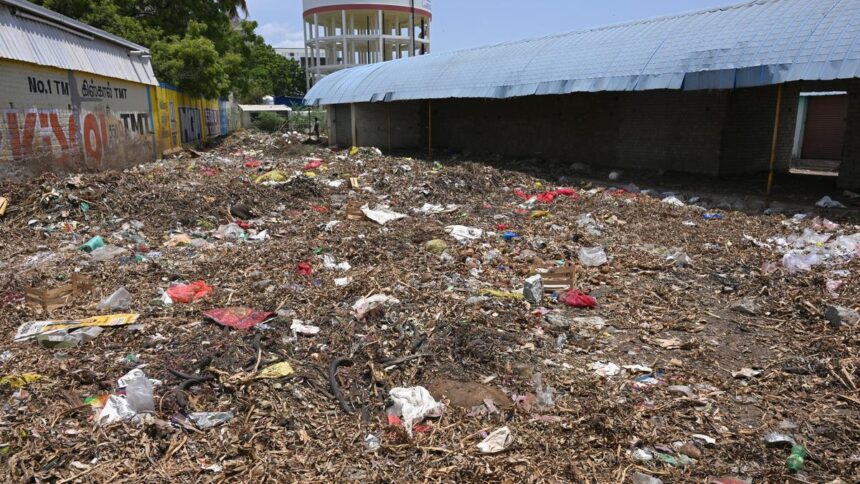
Chinnattumalai in the Madukkarai forest range of the Coimbatore Forest Division. According to the survey report, a Nilgiri tahr was sighted at Chinnaattumalai after a decade.
| Photo Credit: Special Arrangement
While the second synchronised survey of Nilgiri tahr, held in April this year, estimates the State animal’s population at nine in the Coimbatore Forest Division, it has identified significant threats in historical habitats.
According to the survey report released recently, a Nilgiri tahr was sighted at Chinnaattumalai after a decade. This indicates a potential recovery of this habitat and dispersal of the species to the connected landscape. Indirect evidence, such as pellets and hoof-marks, has been recorded at other habitats. The population was nil in last year’s synchronised survey.
Of the seven forest ranges in the division, Madukkarai and Boluvampatti have habitats of the endangered mountain ungulate. Chinnaattumalai and Periyaattumalai are the Tahr habitats in the Madukkarai range. High elevations of the Boluvampatti range — Kunjiranmudi, Kurudimalai, and Vellingiri hills — are the other habitats.
According to the report, Kurudimalai was surveyed as a historical habitat of Nilgiri tahr, based on the description of a herd of mountain goats in the hill in Thiruppugazh, written by Tamil saint-poet Arunagirinathar. Indirect signs, like pellets, were found in the hill during the survey. E.R.C. Davidar, a wildlife conservationist who pioneered studies on Nilgiri tahr, had recorded 20 individuals in Kunjiranmudi in 1975-78.
The report says forest fires, pilgrimage, and invasive species are major threats to the Nilgiri tahr habitats in the division. “Periyattumalai, Chinaattumalai, Kurudimalai, and Vellingiri hills are highly affected by fire and invasive species. From February to May every year, pilgrims are visiting the Vellingiri temple. Thus, human-induced fires may happen… Habitats are disturbed by mass trekking of devotees,” it says.
It says local communities are collecting non-timber forest products, such as honey and firewood, in the forest boundary. Invasive species — such as Eupatorium glandulosum, Chromolaena odorata, and Lantana camara — were found in the habitats. It states that the isolated Nilgiri tahr population (nine) in the division is connected to Kerala’s Elival Mala region. Combined with Elival Mala, it may not exceed 20, which is below the minimum required population for survival: 50.
“The existing anthropogenic pressure from pilgrimage remains one of the threats to the Nilgiri tahr in Vellingiri. Additionally, the expansion of shola forests into grasslands and the reduction of grassland areas may have decreased the available pasture for grazing,” the report says.
Published – August 10, 2025 08:25 pm IST




















